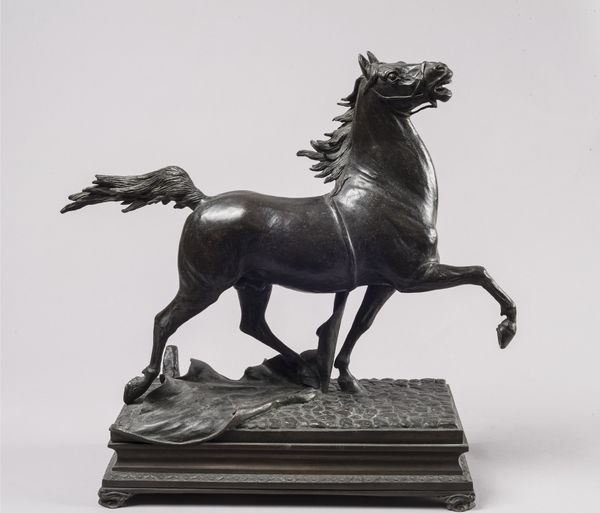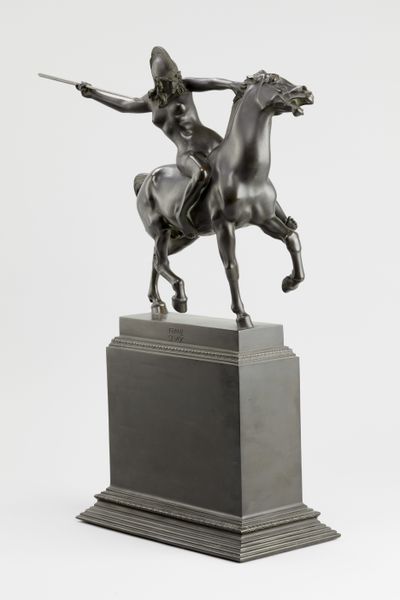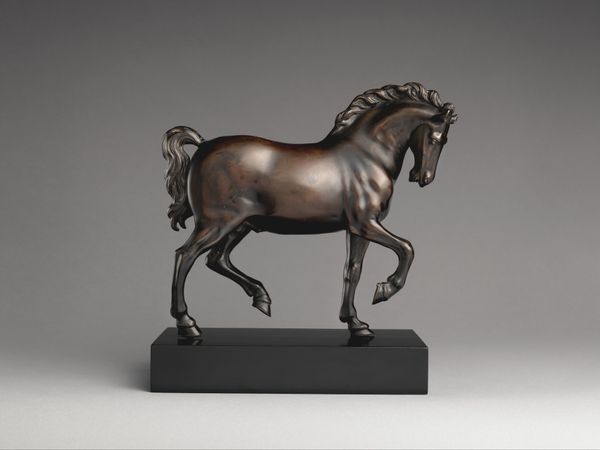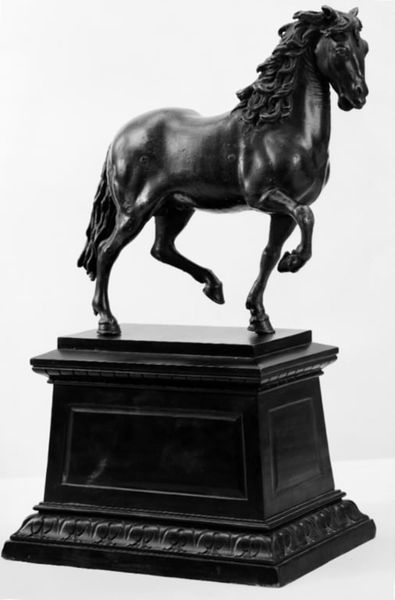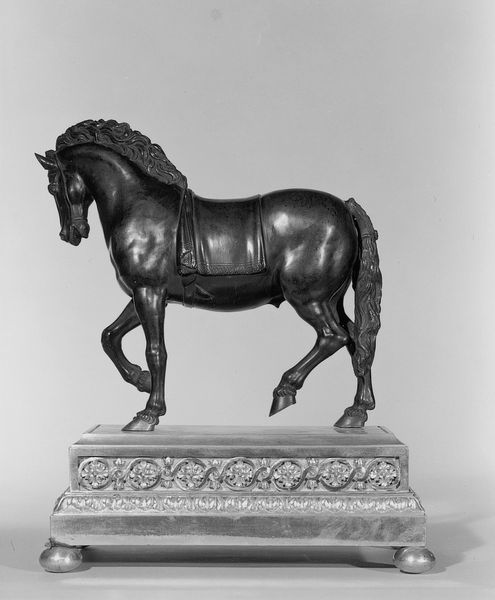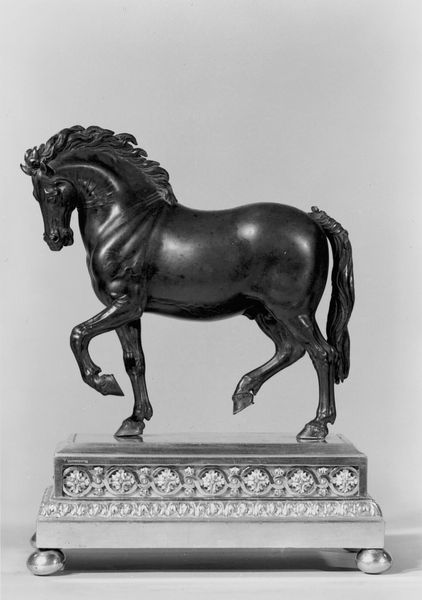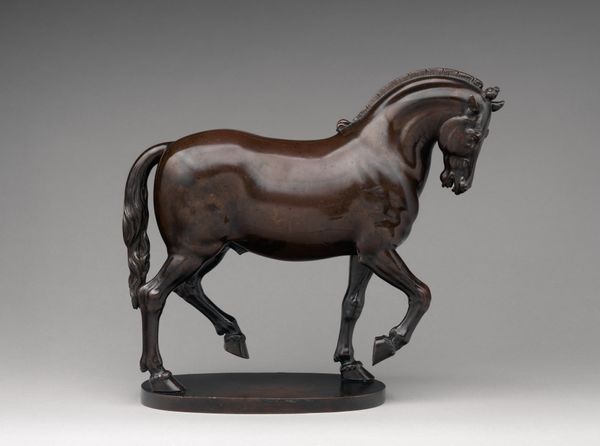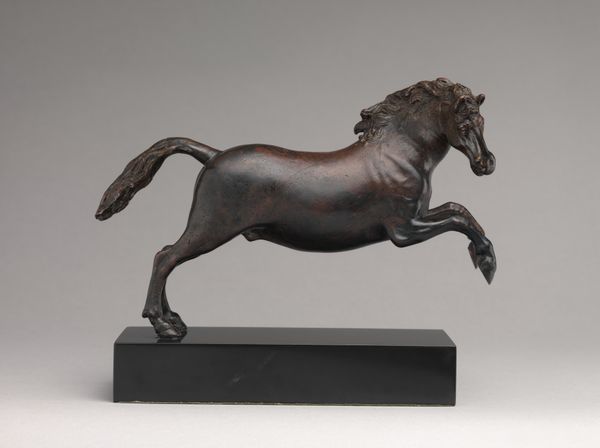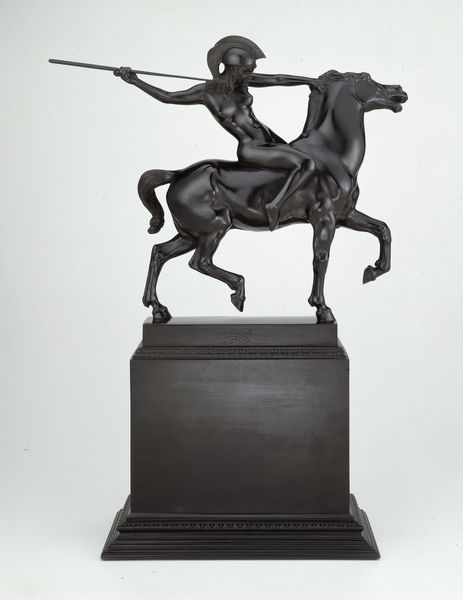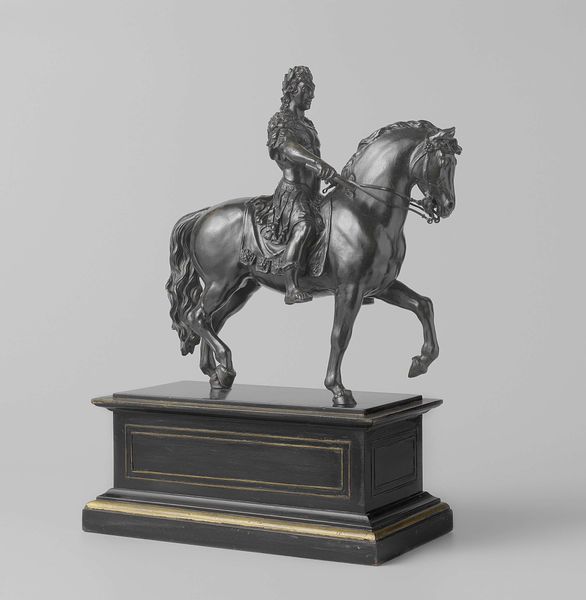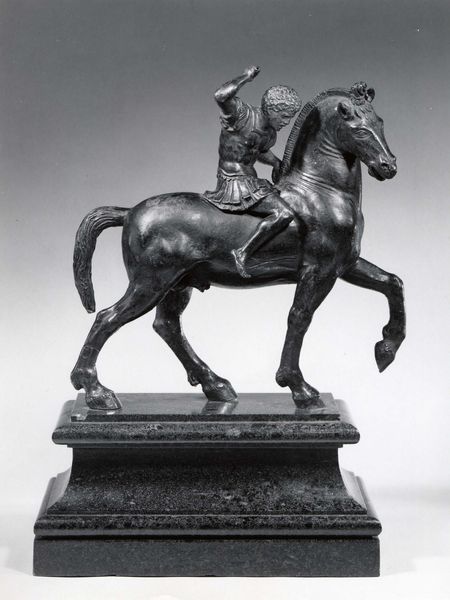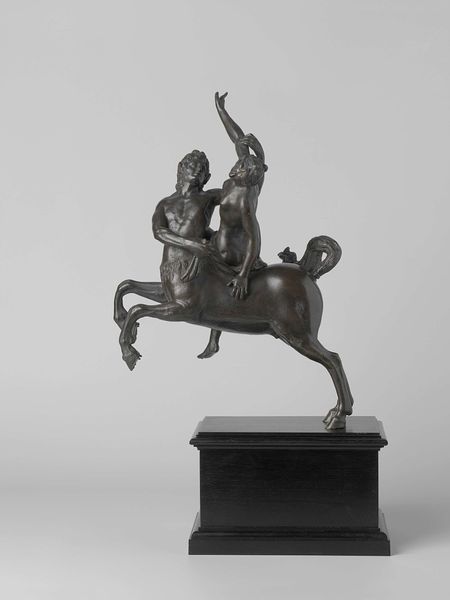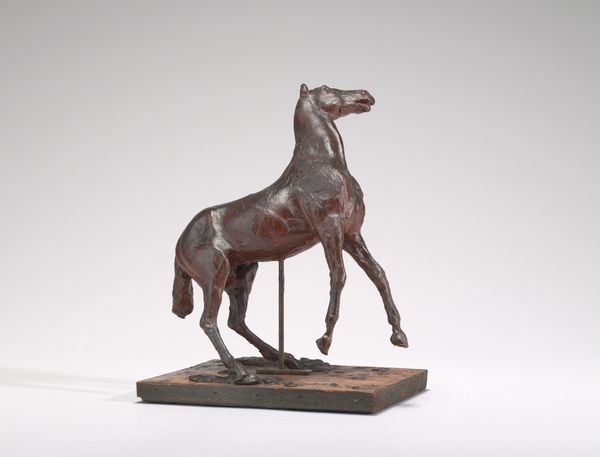
bronze, sculpture
#
sculpture
#
bronze
#
mannerism
#
figuration
#
form
#
sculpture
Dimensions: height 21.6 cm, width 26.0 cm, depth 7.0 cm, height 8.6 cm, width 21.3 cm, depth 11.2 cm, height 30.2 cm, width 26.0 cm, depth 11.2 cm
Copyright: Rijks Museum: Open Domain
Art Historian:Editor: Editor: Here we have Giambologna's bronze sculpture "Stier", or Bull, from around 1600. The detail is just striking! It feels so lifelike and powerful. What strikes you about this piece? Art Historian: Well, focusing on materiality, consider the cost and control of bronze casting at the time. It wasn’t just about representing a bull, but about displaying the patron's power and control over resources and the artist’s mastery of production. Think of the workshops, the labor division involved. How does understanding its bronze material affect your reading of it? Editor: That’s interesting, I hadn’t considered the economics behind it. It definitely elevates my appreciation, thinking about all the labor to create one artwork, now the bronze seems heavier, charged! Did the choice of bronze have other social meanings? Art Historian: Absolutely! Bronze, historically associated with weaponry and status, was highly prized. Here, the bull, a symbol often tied to virility and strength, is cast in a material itself loaded with connotations of wealth and authority. Now consider, Giambologna worked for the Medici. How might that influence the interpretation? Editor: So it’s not just a bull, but a display of Medici power! It really shifts the perspective from simply appreciating the artistic skill to understanding the social and economic context of its creation. Art Historian: Exactly! Seeing the artwork as part of its material conditions unveils new avenues of interpretation. We're reminded art is inseparable from the world that produces it. Editor: I'll never look at a bronze sculpture the same way. Thank you for that, I’ve learned that materials carry a lot of the context. Art Historian: And I learned that sometimes looking at material value lets you look closer, digging to connect to a richer reading!
Comments
No comments
Be the first to comment and join the conversation on the ultimate creative platform.
